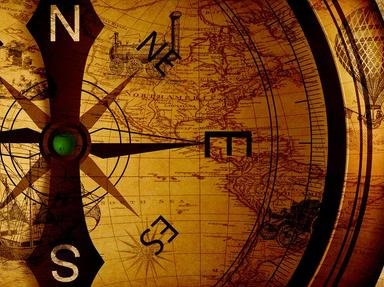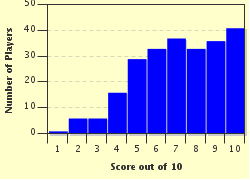Quiz Answer Key and Fun Facts
1. I took a trip to one of the most remotely inhabited islands and saw moai: giant stone human figures with disproportionately large heads. However, I didn't see any chocolate-bearing bunnies whilst I was there. Which Chilean Polynesian island had I visited?
2. I also visited the sandy Fraser Island, quokka inhabited Rottnest Island, and home to the penguin parade, Phillip Island. All of these interesting islands actually belong to a much larger country. Which one?
3. Further on my trip I had a laugh in the sprawling ruins of the ancient Mayan city of Tikal... well, once I managed to find it, that is! Obscured in dense jungle and lacking any direct sources of water, where in the world is Tikal?
4. Tiberias has been home to warm, healing hot springs for thousands of years; it was perfect for a tired traveller like myself. Lying on the shores of the Sea of Galilee, in which 'wailing' country can Tiberias be found?
5. I also partook in a spot of scuba diving at the Great Blue Hole, a large underwater sinkhole with interesting limestone formations. Where in Central America near the Yucatan Peninsula did I find the Great Blue Hole?
6. In a popular holiday resort I was able to relax on the sandy beaches at Playas del Duque, frolic at the Festival de Música de Canarias, and marvel at the barren Las Canadas caldera atop Mount Teide, one of the tallest island volcanoes in the world. Which Canary Island had I visited this time?
7. I was awed when I visited Mount Kita-dake: a beautiful mountain covered with verdure and greenery. Known for being the second-tallest mountain of a country famed for its juxtaposed technological advances and naturalistic traditions, which country is Mount Kita-dake situated within?
8. I was most intrigued when I visited the Plitvice Lakes National Park - the largest of its country - and learnt of its 16 interconnected surface lakes and their impressive mineral-induced hues of blue, green and grey. Where in Europe did I go to see the Plitvice Lakes National Park?
9. I also enjoyed a spot of spelunking (of sorts) in the Puerto-Princesa underground river cave, where tourists can actually ride a boat in the entrance of the cave and enjoy its unique rock formations. The surrounding national park also featured interesting flora and fauna, but what island-filled country houses the Puerto-Princesa National Park and river?
10. The Ban Gioc (or Detian) waterfalls looked to me like silk flowing down giant stone stairs, and it was a place of pure tranquility. In which country, known for its part in a twenty year war within the 20th century, do the attractive waters of Ban Gioc flow?
Source: Author
malik24
This quiz was reviewed by FunTrivia editor
Tizzabelle before going online.
Any errors found in FunTrivia content are routinely corrected through our feedback system.

